“Friends of SAARC who want to see this organization playing a decisive role in regional affairs are of the view that Nepal should send a special envoy at a high level to all SAARC capitals to impress upon them the necessity of keeping SAARC alive and active so that it would resume its activities as envisaged in the Charter, including declarations and programs of action adopted by 18 summits.”
-Excerpt from the article.
____________________________________________________________________________
-Professor Dr. Mohan Prasad Lohani
-Former Ambassador of Nepal to Bangladesh
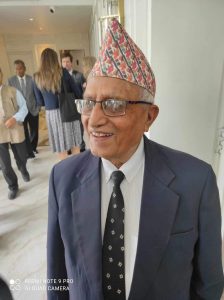
Introduction:
South Asian Association for Regional Cooperation or SAARC, which was launched at Dhaka, Bangladesh in December 1985 after more than five years of intensive preparatory work at the level of foreign secretaries and foreign ministers of the South Asian region, opening, thus, a new era of regional cooperation for the promotion of peace and progress, mutual trust and goodwill in South Asia’ was, indeed, an expression of the common desire of South Asian leaders to promote the welfare of the peoples of South Asia and to improve their quality of life.’ SAARC is going to complete 37 years of its existence in December this year.
As a member of the Nepali delegation led by late King Birendra, I recall attending the first SAARC Summit in Dhaka in December 1985. SAARC was launched with a great deal of fanfare and euphoria.
The inaugural session, precisely speaking, was like a South Asian festival in which not only heads of state and government, ministers for foreign affairs and senior officials from the Ministry of Foreign Affairs but also civil society leaders, representatives of the private sector and the media, experts, professionals and the people in general participated enthusiastically, joyfully and on an optimistic note. There were great expectations, and high hopes were pinned on the statements of SAARC leaders, including the summit declaration and program of action.
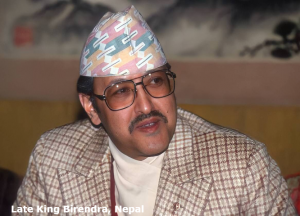
The agenda of the first SAARC summit was comprehensive and wide-ranging-reforms from poverty alleviation in education and health facilities, addressing environmental issues to collective self-reliance based on partnership for cooperation to expedite the realization of common objectives like regional peace, stability and prosperity. President JR Jayawardane of Sri Lanka compared the newly launched regional association to a boat and urged the leaders seated in the podium in a cheerful mood to avert the possibility of any mutiny on the boat. Nobody missed the message implicit in the mutiny metaphor so insightfully expressed by the late President of Sri Lanka.
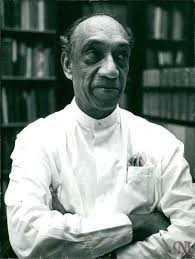 Terrorism was an issue of common concern and remains so even today in the region. The third SAARC summit hosted by Nepal in 1987 took up this issue and unanimously adopted SAARC Convention on Suppression of Terrorism and Additional Protocol dealing with the Prevention and Suppression of Financing of Terrorism. The New Delhi summit in 2007 which admitted Afghanistan as the 8th member called for continued collective efforts at the regional level to combat terrorism as most of the region’s member states continue to be plagued by terrorist violence resulting in the senseless killing of innocent civilians and widespread destruction of public property. Indo-Pak relations became further strained after terrorist attacks in Mumbai, India in 2008 killed nearly 200 innocent people.
Terrorism was an issue of common concern and remains so even today in the region. The third SAARC summit hosted by Nepal in 1987 took up this issue and unanimously adopted SAARC Convention on Suppression of Terrorism and Additional Protocol dealing with the Prevention and Suppression of Financing of Terrorism. The New Delhi summit in 2007 which admitted Afghanistan as the 8th member called for continued collective efforts at the regional level to combat terrorism as most of the region’s member states continue to be plagued by terrorist violence resulting in the senseless killing of innocent civilians and widespread destruction of public property. Indo-Pak relations became further strained after terrorist attacks in Mumbai, India in 2008 killed nearly 200 innocent people.
More than three decades and a half have elapsed since the first SAARC summit. SAARC’s activities and its evolution over the years, including achievements and pitfalls have been critically reviewed, examined and analyzed by South Asian scholars, thinkers and academics through their research-based articles, write-ups and thematic papers. Y.N. Khanal, doyen of Nepal’s foreign policy, speaking at a seminar in 1987, two years after the first SAARC summit, reviews this period critically and with insight:
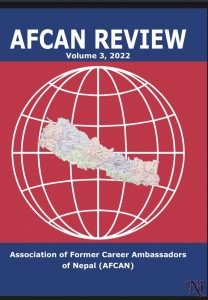 “Though one may argue that SAARC being only two years old, can be viewed in terms of more prospect and less retrospect, the current seminar is a timely exercise. In about a month or two, the third summit of the South Asian heads of state and government is taking place in Kathmandu. Since May 1980 when President Ziaur Rahman first wrote to the South Asian leaders on the subject, cautious progress has been made regarding both the areas of cooperation identified and the institutionalization of the cooperative grouping. Efforts are afoot in appropriate organs of the Association to explore further areas of cooperation. By November we will have completed almost two years, even after the formal launching of the Association at the Dhaka summit in December 1985 with its charter and the various hierarchical organs of operation ranging from the summit meeting through the council of ministers to the standing committee of the foreign secretaries. SAARC is a promising but difficult undertaking.”
“Though one may argue that SAARC being only two years old, can be viewed in terms of more prospect and less retrospect, the current seminar is a timely exercise. In about a month or two, the third summit of the South Asian heads of state and government is taking place in Kathmandu. Since May 1980 when President Ziaur Rahman first wrote to the South Asian leaders on the subject, cautious progress has been made regarding both the areas of cooperation identified and the institutionalization of the cooperative grouping. Efforts are afoot in appropriate organs of the Association to explore further areas of cooperation. By November we will have completed almost two years, even after the formal launching of the Association at the Dhaka summit in December 1985 with its charter and the various hierarchical organs of operation ranging from the summit meeting through the council of ministers to the standing committee of the foreign secretaries. SAARC is a promising but difficult undertaking.”
The last sentence of the somewhat lengthy paragraph quoted above has two significant words – promising and difficult. While welcoming the launching of the Association with a lot of promise for regional peace, prosperity and stability, Prof. Khanal very tersely describes the undertaking as ‘difficult’, as he was fully aware of continued tension in Indo-Pak relations ever since the partition of Indian sub-continent in 1947 just after both India and Pakistan gained independence. The latter, in particular, retained its identity as a new-born country with Muslim dominant population. In an overview of SAARC written immediately after the fifth SAARC summit at Male in 1990, late Prof. Khanal’s observation is more straightforward and unambiguous: “A suppressed strain of unease about bilateral relations ran subconsciously through the meeting. Given the state of the region, no spectacular progress was expected but it needs to be stated that the impact of progress so far made in cooperative as distinct from competitive regional polity has remained insignificant. The outcome of the summit in terms of regional cooperation was dismissed as insignificant.
Needless to point out, the centrality of India in SAARC has been pointed out and emphasized by several scholars and experts. In a paper presented at the National Seminar organized by the Institute of Foreign Affairs held on August 20-21, 1999 in Kathmandu, eminent economist Dr. Yuba Raj Khatiwada, commenting on how SAARC as a regional organization can achieve success, makes the following frank observation: ‘The success of SAARC as a regional organization for mutual cooperation and development is contingent upon India’s initiatives to promote a cooperative atmosphere in South Asia. In view of its pervasively dominating position in South Asia, it has to be realized that India constitutes the core while all its neighbors form a periphery of the South Asian region, and often regional organizations are built around dominant core states.’
SAARC is different from other regional organizations in the sense that the SAARC Charter categorically states all decisions in the process are to be taken on the basis of unanimity, contentious and bilateral issues shall be excluded from the formal SAARC deliberations. Sri Lanka host to the 5th summit in 1989 declined to hold it on the ground that Indian troops known as Indian Peace Keeping Force (IPKF) stationed in Sri Lanka to quell the Tamil Tigers had not left this island country despite the ultimatum issued to the IPKF by then President Premdasa. Nepal, concerned over Premadasa’s refusal to host the 5th SAARC summit, instructed me as I was concurrently accredited to Sri Lanka as ambassador to call upon President Premadasa and persuade him to go ahead with the summit.
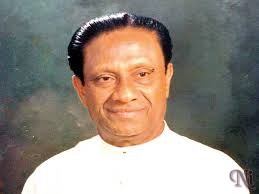 As special envoy when I met Premadasa and conveyed to him Nepal’s position requesting him to abide by the Charter provision to exclude ‘contentious bilateral disputes from the summit, the President of Sri Lanka furiously told me that it was impossible for him to host the summit as his country was under foreign occupation with its sovereign status at stake or in question. Sri Lanka’s refusal to host the summit was communicated by me to Nepal with the result that Male agreed to host the 5th summit in 1990. The fact that Colombo withdrew from the summit by not hosting it in 1989 because of differences with India over the continued presence of Indian army did not bode well for uninterrupted SAARC summits in the years to come.
As special envoy when I met Premadasa and conveyed to him Nepal’s position requesting him to abide by the Charter provision to exclude ‘contentious bilateral disputes from the summit, the President of Sri Lanka furiously told me that it was impossible for him to host the summit as his country was under foreign occupation with its sovereign status at stake or in question. Sri Lanka’s refusal to host the summit was communicated by me to Nepal with the result that Male agreed to host the 5th summit in 1990. The fact that Colombo withdrew from the summit by not hosting it in 1989 because of differences with India over the continued presence of Indian army did not bode well for uninterrupted SAARC summits in the years to come.
Nepal which was to have hosted the 11th SAARC Summit in 1999 could not do so because of the Kargil war in Kashmir leading to strained Indo-Pak relations.
Nepal had to wait for 3 years and a half before the 1th summit was held in Kathmandu in 2002.
Because of embittered relations between India and Pakistan, Gen. Parvez Musharraf, President of Pakistan, was not allowed to overfly from Indian air space and he had to take a circuitous route via Beijing to attend the Kathmandu summit. During the last 3 decades and a half, only 18 summits have been held, despite agreement on organizing regular annual summit.
Deadlock in SAARC Summit:
The practice of holding SAARC summit annually attended by 8 member states was discontinued after the 18th summit hosted by Nepal in 2014 decided to request Pakistan, in alphabetical order, to host the 19th summit in Islamabad in 2016.
Pakistan had communicated to all its member states its readiness to host the 19th summit in Islamabad with adequate preparations and necessary arrangements. There was a setback when India refused to attend the 19th summit as a sizable number of its soldiers stationed in Kashmir were killed by terrorists allegedly aided and abetted by Pakistan. Pakistan has continued to deny outright its involvement in the killing of Indian soldiers. The 19th summit scheduled to take place in Islamabad in November 2016 has been indefinitely postponed giving rise to speculation and fears that SAARC’s future is bleak, uncertain and the association itself is vulnerable to unceremonious collapse. SAARC has no doubt remained in a state of coma or limbo for more than six years, despite current SAARC chair Nepal’s appeal to member states to bring SAARC back to life as a vibrant regional platform for dealing with all issues of regional interest and concern.
It has been suggested by SAARC observers, including Mr. YK Silwal and Mr. Arjun B. Thapa, secretaries-general of SAARC representing Nepal that Nepal’s leadership as SAARC chair is crucial to revitalize this regional organization with enormous potential to thrash out existing problems and emerging challenges within a regional framework. Friends of SAARC who want to see this organization playing a decisive role in regional affairs are of the view that Nepal should send a special envoy at a high level to all SAARC capitals to impress upon them the necessity of keeping SAARC alive and active so that it would resume its activities as envisaged in the Charter, including declarations and programs of action adopted by 18 summits.
A senior Nepali diplomat who has also represented the country as director in the SAARC secretariat told me recently that one fails to understand why India and Pakistan cannot use the SAARC forum for dialogue while they continue to sit face to face across the table as members of Shanghai Cooperation Organization (SCO). This is really baffling to all member states.
The evolution of SAARC over the years cannot be dismissed as being insignificant, despite setbacks from time to time threatening the sustainability of this regional organization.
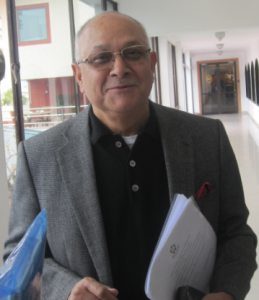
Scholars like Lok Raj Baral and Shreedhar Khatri look at SAARC in a positive spirit. While Baral observes: the South Asian region needs to be revisited by scholars and policy planners in order to boost the spirit of regional cooperation’, Khatri gives primacy to the people of the region in the following statement: ‘An essential ingredient for a vision of South Asia for the Third Decade is the people of the region.’
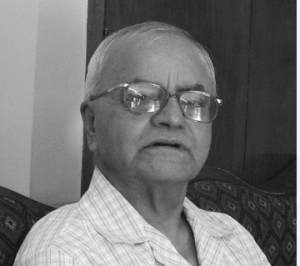 In fairness to SAARC and its relevance, it must be stated that SAARC, since its inception, has positively contributed to a resurgence of South Asian consciousness over the years. Assertion of a South Asian identity is the outcome of such consciousness. People-to-people contacts or connectivity is a recurring constant in all the SAARC summits (1985-2014). While inter-governmental meetings and agreements do facilitate the process of regional cooperation, for a much wider and more effective impact of such cooperation, it is essential to supplement inter-governmental efforts by responding to the aspirations of the peoples of South Asia, particularly their spontaneous desire to communicate and cooperate with each other at the people-to-people level.
In fairness to SAARC and its relevance, it must be stated that SAARC, since its inception, has positively contributed to a resurgence of South Asian consciousness over the years. Assertion of a South Asian identity is the outcome of such consciousness. People-to-people contacts or connectivity is a recurring constant in all the SAARC summits (1985-2014). While inter-governmental meetings and agreements do facilitate the process of regional cooperation, for a much wider and more effective impact of such cooperation, it is essential to supplement inter-governmental efforts by responding to the aspirations of the peoples of South Asia, particularly their spontaneous desire to communicate and cooperate with each other at the people-to-people level.
An important decision of the 18th SAARC summit hosted by Nepal in 2014 was the positive response of all member states to promoting and accelerating regional cooperation in the energy sector. The implementation aspect of such cooperation has, however, remained disappointing as former secretary Dwarika Nath Dhungel observes critically: “The SAARC in general, in particular its framework on energy agreed and signed in 2014 by all SAARC members has remained in paper only, mainly for obvious reason i.e. the state of relationship between India and Pakistan. So long as the relationship between these two countries remains strained, SAARC and its framework are not going to bear fruit. Furthermore, India seems to be more interested to look towards east and use the Bay of Bengal Initiative for Multi-Sectoral Technical and Economic Cooperation (BIMSTEC) as a more useful vehicle. But in view of the fact that SAARC as a regional organization has so far not succeeded due to historical legacy, such as India-Pakistan relationship, we will have to wait for some years to judge whether or not BIMSTEC is a useful mechanism to foster the cooperative economic relationship among its member countries.’ Implementation of programs of action already agreed upon in previous SAARC summit declarations and other decisions is a challenge to the effectiveness of this regional association. Emphasis on the needed impetus for the effective implementation of decisions and programmes of action approved during the previous summits comes out clearly in the following terse statement of the 14th Summit Declaration: There is an urgent need to move SAARC from declaratory to implementation phase.’
Conclusion:
The prolonged stalemate should not and cannot be allowed to continue for long. I goes without saying that revitalizing SAARC is in the interest of all member states. As former SAARC secretary-general Y. K Silwal categorically states: SAARC has come to stay and both India and Pakistan need it. One of the key objectives of SAARC, as enshrined in its Charter, has been to accelerate economic growth, social progress and cultural development in the region and to provide all individuals the opportunity to live in dignity and to realize their full potentials.’ The objective is as relevant today as it was three and a half decades ago when the Association was formally established.
End text.
# Text courtesy: The Association of Former Career Ambassadors of Nepal ( AFCAN); volume 3, 2022:
# Thanks the entire editorial team of the AFCAN:. N. P. Upadhyaya.
References:
1. The SAARC Declarations (1985-2014), SAARC Secretariat, Kathmandu
2. Baral, Lok Raj: “Cooperation with Realism: The Future of South Asian Organization”, South Asian Survey, 2005
3. Dhungel, DN: “Perspective on Water Issues in South Asian Region: A Nepali
Professional Thinking”, Unpublished Paper, Kathmandu, October 2022
4. Khanal, YN: Nepal’s Non-Isolationist Foreign Policy, Satyal Publication, Kathmandu, 2000
5. Khatiwada, Yuba Raj: “Globalization, Regional Cooperation and National Priorities”, Nepal’s Foreign Policy: Issues and Options, Institute of Foreign Affairs (IFA), Kathmandu, 1999
6. Khatri, Shreedhar K: “Vision and Strategy for a Third Decade of SAARC”, Paper Presented at a Seminar organized by IFA Kathmandu, March 27, 2007
7. Lohani, MP: “SAARC: Challenges and Prospects”, Journal of International Affairs, China Study Center, April/September, 2009
8. Lohani, MP: “Assessment of the Eleventh SAARC Summit Declaration: Need for Effective Implementation”, Report of the Seminar on Follow-up of the Eleventh
9. SAARC Summit, IFA, Kathmandu, March 2003.
